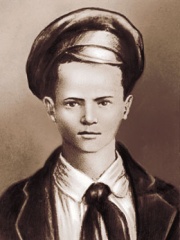
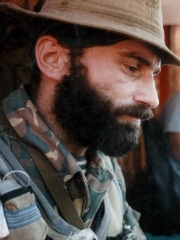
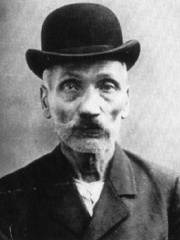
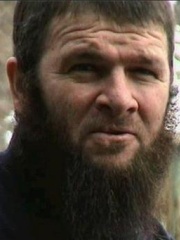
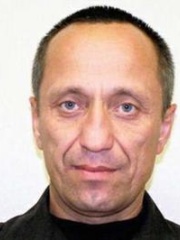
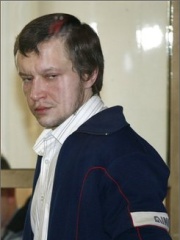

The Most Famous
EXTREMISTS from Russia
This page contains a list of the greatest Russian Extremists. The pantheon dataset contains 283 Extremists, 8 of which were born in Russia. This makes Russia the birth place of the 7th most number of Extremists behind Italy, and France.
Top 8
The following people are considered by Pantheon to be the most legendary Russian Extremists of all time. This list of famous Russian Extremists is sorted by HPI (Historical Popularity Index), a metric that aggregates information on a biography's online popularity.

1. Pavlik Morozov (1918 - 1932)
With an HPI of 68.21, Pavlik Morozov is the most famous Russian Extremist. His biography has been translated into 31 different languages on wikipedia.
Pavel Trofimovich Morozov (Russian: Па́вел Трофи́мович Моро́зов; 14 November 1918 – 3 September 1932), better known by the diminutive Pavlik, was a Soviet youth praised by the Soviet press as a martyr. Evidence has emerged since the dissolution of the Soviet Union of the fabrication of the Pavlik Morozov legend, as well as what Soviet officials thought of him. His story, dated to 1932, is that of a 13-year-old boy who denounced his father to the authorities and was in turn killed by his family. His story was a subject of reading, songs, plays, a symphonic poem, a full-length opera, and six biographies. His politicized and mythologized story was used to encourage Soviet Bloc children to also inform on their parents.

2. Shamil Basayev (1965 - 2006)
With an HPI of 65.83, Shamil Basayev is the 2nd most famous Russian Extremist. His biography has been translated into 54 different languages.
Shamil Salmanovich Basayev (Chechen: Салман ВоӀ Шамиль; Salman Voj Şamil; Russian: Шамиль Салманович Басаев; 14 January 1965 – 10 July 2006), also known by his kunya Abu Idris, was a Chechen guerrilla leader who served as a senior military commander in the breakaway Chechen Republic of Ichkeria. He held the rank of brigadier general in the Armed Forces of Ichkeria, and was posthumously declared generalissimo. As a military commander in the separatist armed forces of Chechnya, one of his most notable battles was the separatist recapture of Grozny in 1996, which he personally planned and commanded together with Aslan Maskhadov. He also masterminded several of the worst terrorist attacks that occurred in Russia. Starting as a field commander in the Transcaucasus, Basayev led guerrilla campaigns against Russian forces for years, as well as launching mass-hostage takings of civilians, with his goal being the withdrawal of Russian soldiers from Chechnya. From 1997 to 1998, he also served as the vice-prime minister of the breakaway state in Aslan Maskhadov's government. Beginning in 2003, Basayev used the nom de guerre and title of "Emir Abdullah Shamil Abu-Idris". As Basayev's ruthless reputation gained notoriety, he became revered among his peers and eventually became the highest ranking Chechen military commander and was considered the undisputed leader of the Chechen insurgency as well as being the overall senior leader of all other Chechen rebel factions. He ordered the Budyonnovsk hospital raid in 1995, the Beslan school siege in 2004, and was responsible for numerous attacks on security forces in and around Chechnya. He also masterminded the 2002 Moscow theater hostage crisis and the 2004 Russian aircraft bombings. ABC News described him as "one of the most-wanted terrorists in the world". Despite his reputation, journalist Tom de Waal described him as "almost unassuming in the flesh", being "of medium height, with a bushy beard and high forehead worthy of a Moscow intellectual, and a quiet voice." Basayev was killed in a truck explosion during an arms deal in July 2006. Forensic evidence suggests that his death was caused when a landmine he was examining exploded, but Russian officials have also claimed that one of the Kamaz trucks used was booby-trapped and detonated to destroy the arms shipment, also killing Basayev.

3. Wilhelm Voigt (1849 - 1922)
With an HPI of 64.84, Wilhelm Voigt is the 3rd most famous Russian Extremist. His biography has been translated into 28 different languages.
Friedrich Wilhelm Voigt (German pronunciation: [ˈfʁiːdʁɪç ˈvɪlhɛlm ˈfoːkt]; 13 February 1849 – 3 January 1922) was a German con man and impostor. In his most famous exploit, Voigt masqueraded as a military officer of the elite Prussian Guards in 1906, rounding up a number of Imperial German Army soldiers under his "command", "arresting" the Mayor of Köpenick, and "confiscating" 4,002 marks from the city treasury. Voigt then changed back into civilian clothing and disappeared with the money. The case was exploited for British propaganda about German militarism, but the German people overwhelmingly considered Voigt's exploit to be both clever and hilarious. Although Voigt was soon caught and served 20 months in prison, he became a folk hero as "the Captain of Köpenick" (German: der Hauptmann von Köpenick [ˈhaʊptman fɔn ˈkøːpənɪk] ) and was granted a full pardon by Kaiser Wilhelm II.

4. Dokka Umarov (1964 - 2013)
With an HPI of 63.19, Dokka Umarov is the 4th most famous Russian Extremist. His biography has been translated into 40 different languages.
Doku Khamatovich Umarov (Chechen: Ӏумар Хьамади кӏант Докка, romanized: Jumar Ẋamadi khant Dokka, [ʕuˈmɑr ħɑmɑdi ˈkʼɑnt doˈkːɑ]; Russian: Доку Хаматович Умаров, Doku Khamatovich Umarov; 13 April 1964 – 7 September 2013), often known as Dokka Umarov, was a Chechen militant in the North Caucasus. Umarov was a major military figure in both wars in Chechnya during the 1990s and 2000s, before becoming the leader of the greater insurgency in the North Caucasus. He was active mostly in south-western Chechnya, near and across the borders with Ingushetia and Georgia. During the late 1990s, after Chechnya's first war against Russia, Movladi Udugov's status as war hero enabled him to take the post of the breakaway Republic's Security Minister. Between 2006 and 2007, following the death of his predecessor Sheikh Abdul Halim, Umarov became the underground President of Ichkeria of the unrecognized government of the Chechen Republic of Ichkeria, the post that Umarov eventually abolished himself when he renounced and abandoned Chechen nationalism in favour of Caucasian pan-Islamism and jihadist ideology. The political mantle of Chechen nationalist separatism was formally taken over by the self-exiled Akhmed Zakayev, Umarov's former wartime comrade and friend turned political rival. Having quit the position of Chechen separatist leader, Umarov subsequently became the self-proclaimed Emir of the entire North Caucasus region of Russia, declaring it a putative Islamic state of the Caucasus Emirate. In 2010, Umarov abortively resigned from the position and appointed Aslambek Vadalov as the new Emir of the Caucasus Emirate, but soon afterwards issued a statement annulling the previous declaration and stating he would remain in his position and rebel Sharia court ruled in favour of Umarov over the rift, following which most other Russian rebel leaders re-swore allegiance to him. For years, Umarov had been the top terrorist leader in Russia. He had taken responsibility for several attacks on civilian targets since 2009, including the 2010 Moscow Metro bombings and the 2011 Domodedovo International Airport bombing. In 2012, Umarov ordered his followers to halt attacks on the civilian population of Russia, while leaving military and security personnel as legitimate targets. In July 2013, however, he announced the end of this moratorium and calling on Islamic insurgents in the Caucasus and beyond to forcibly prevent the holding of the Sochi 2014 Olympics. Umarov was internationally wanted by the governments of Russia and the United States. In 2011, the United Nations Security Council's Al-Qaida and Taliban Sanctions Committee added Umarov to the list of individuals allegedly associated with al-Qaeda and the Taliban. On 18 March 2014, Umarov's death was reported by the Caucasus Emirate-associated Islamist website Kavkaz Center, which offered no details but did say his death was confirmed by the Command of the Caucasus Emirate. He was announced to be replaced by the Caucasus Emirate's senior Sharia judge Ali Abu Mukhammad, who then officially confirmed the death of Umarov in a video posted on YouTube. According to a report posted on Kavkaz Center, Umarov was poisoned on 6 August 2013 and died at dawn on 7 September 2013. On 25 September 2017, Russian media reported that the body of Umarov had possibly been found in a remote mountainous area in Ingushetia.
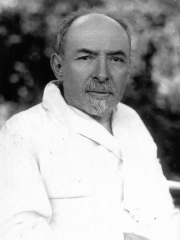
5. Dmitry Ilyich Ulyanov (1874 - 1943)
With an HPI of 60.46, Dmitry Ilyich Ulyanov is the 5th most famous Russian Extremist. His biography has been translated into 16 different languages.
Dmitri Ilyich Ulyanov (Russian: Дми́трий Ильи́ч Улья́нов; 16 August [O.S. 4 August] 1874 – 16 July 1943) was a Russian and Soviet physician and revolutionary, the younger brother of Aleksandr Ulyanov and Vladimir Lenin. As a medical student at Lomonosov Moscow State University, he became involved with revolutionary activity and joined the illegal Marxist Rabochiy soyuz ("Workers' Union"). He was first arrested in 1897. The following year he was exiled to Tula, then Podolsk, where he was put under police supervision (equivalent to modern probation). As his brother's renown grew, he endured countless arrests. In 1900 he became a correspondent of Iskra. The following year he graduated from the medical school of the University of Tartu. As a doctor and a Marxist, Ulyanov sought to apply his medical training to the revolutionary struggle. During the Revolution of 1905 he provided medical aid to strikers in Simbirsk. He became a trusted cadre of the Russian Social Democratic Workers' Party and was a delegate to its 2nd Congress. He served as the representative of the Central Committee in Kiev. His duties carried him throughout Russia and Ukraine, first to Serpukhov, then to Feodosiya and Crimea. At the beginning of the First World War, Ulyanov was mobilized into the army. He served as a medical officer in Sevastopol, in Odessa, and on the Romanian front, continuing his revolutionary activities on the side. In 1916 he married Antonia Ivanovna Neshcheretova. They had a son, Viktor, and a daughter, Olga. Ulyanov remained in Ukraine during the aftermath of the October Revolution and the Civil War, working to strengthen the party apparatus in Crimea and was chairman of the short-lived Crimean Socialist Soviet Republic. In 1921 he moved to Moscow, where he worked at Narkomzdrav (People's Commissariat of Public Health), at the Communist University of the Toilers of the East, in the health research department of the Kremlin, and at the V. I. Lenin Central Museum. During the 1930s, he collaborated with his sister Maria (who was named after their mother) to write reminiscences about their famous brother, Vladimir Lenin, which were published in serial form. He was a delegate to the 16th and 17th Congresses of the Communist Party of the Soviet Union. He died in Gorki Leninskiye and was buried in Moscow. Many streets and localities in the Soviet Union were renamed in his honor.

6. Mikhail Popkov (b. 1964)
With an HPI of 56.79, Mikhail Popkov is the 6th most famous Russian Extremist. His biography has been translated into 18 different languages.
Mikhail Viktorovich Popkov (Russian: Михаи́л Ви́кторович Попко́в; born 7 March 1964) is a Russian serial killer, rapist, and necrophile who committed the sexual assault and murder of eighty-seven girls and women between 1992 and 2011 in Angarsk, Irkutsk, in Siberia, and Vladivostok in the Russian Far East, although he has confessed to and is suspected of at least ninety in total. He is known as "the Werewolf" and "the Angarsk Maniac" for the particularly brutal nature of his crimes; he would extensively mutilate the bodies of his victims and perform sexual acts on them. Popkov was also known as "the Wednesday Murderer" because most of his victims' bodies were found on Wednesdays. He is the single most prolific serial killer in Russian history. Popkov, a former police officer and security guard, was convicted of 22 murders in 2015 and sentenced to life imprisonment, and confessed to an additional 59 three years later; on December 10, 2018, he was convicted for 56 of the 59 additional killings, three of which the police could not find sufficient evidence with which to be proven, and given a second life sentence. There were calls for Popkov to be executed, but this was unavailable as capital punishment in Russia is subject to a formal moratorium.

7. Alexander Pichushkin (b. 1974)
With an HPI of 56.52, Alexander Pichushkin is the 7th most famous Russian Extremist. His biography has been translated into 30 different languages.
Alexander Yuryevich Pichushkin (Russian: Алекса́ндр Ю́рьевич Пичу́шкин; born 9 April 1974), also known as the Chessboard Killer (Убийца с шахматной доской) and the Bitsa Park Maniac (Битцевский маньяк), is a Russian serial killer who is believed to have killed at least forty-nine people, and possibly as many as sixty, between 1992 and 2006. Pichushkin was active in Moscow's Bitsa Park, where a number of the victims' bodies were found. In 2007 he was sentenced to life imprisonment.

8. Aliaskhab Kebekov (1972 - 2015)
With an HPI of 46.23, Aliaskhab Kebekov is the 8th most famous Russian Extremist. His biography has been translated into 14 different languages.
Aliaskhab Alibulatovich Kebekov (Russian: Алиасхаб Алибулатович Кебеков; 1 January 1972 – 19 April 2015), also known as Ali Abu Muhammad (Russian: Али Абу Мухаммад), was a North Caucasian militant Islamist in North Caucasus and the leader of the Caucasus Emirate following the death of inaugural leader Dokka Umarov. Following in the same religious tradition as Umarov, he adhered to the ideology of Salafism. The United States Department of State added Kebekov to its list of Specially Designated Global Terrorists on 25 March 2015. On 19 April 2015, Kebekov was killed by Russian security forces during special operations in the settlement of Gerei-Avlak in Buynaksk. An Avar by nationality, Kebekov was the first non-Chechen to lead the North Caucasus insurgency.
People
Pantheon has 8 people classified as Russian extremists born between 1849 and 1974. Of these 8, 2 (25.00%) of them are still alive today. The most famous living Russian extremists include Mikhail Popkov, and Alexander Pichushkin. The most famous deceased Russian extremists include Pavlik Morozov, Shamil Basayev, and Wilhelm Voigt. As of April 2024, 1 new Russian extremists have been added to Pantheon including Aliaskhab Kebekov.
Living Russian Extremists
Go to all RankingsDeceased Russian Extremists
Go to all RankingsPavlik Morozov
1918 - 1932
HPI: 68.21
Shamil Basayev
1965 - 2006
HPI: 65.83
Wilhelm Voigt
1849 - 1922
HPI: 64.84
Dokka Umarov
1964 - 2013
HPI: 63.19
Dmitry Ilyich Ulyanov
1874 - 1943
HPI: 60.46
Aliaskhab Kebekov
1972 - 2015
HPI: 46.23
Newly Added Russian Extremists (2025)
Go to all RankingsOverlapping Lives
Which Extremists were alive at the same time? This visualization shows the lifespans of the 6 most globally memorable Extremists since 1700.

